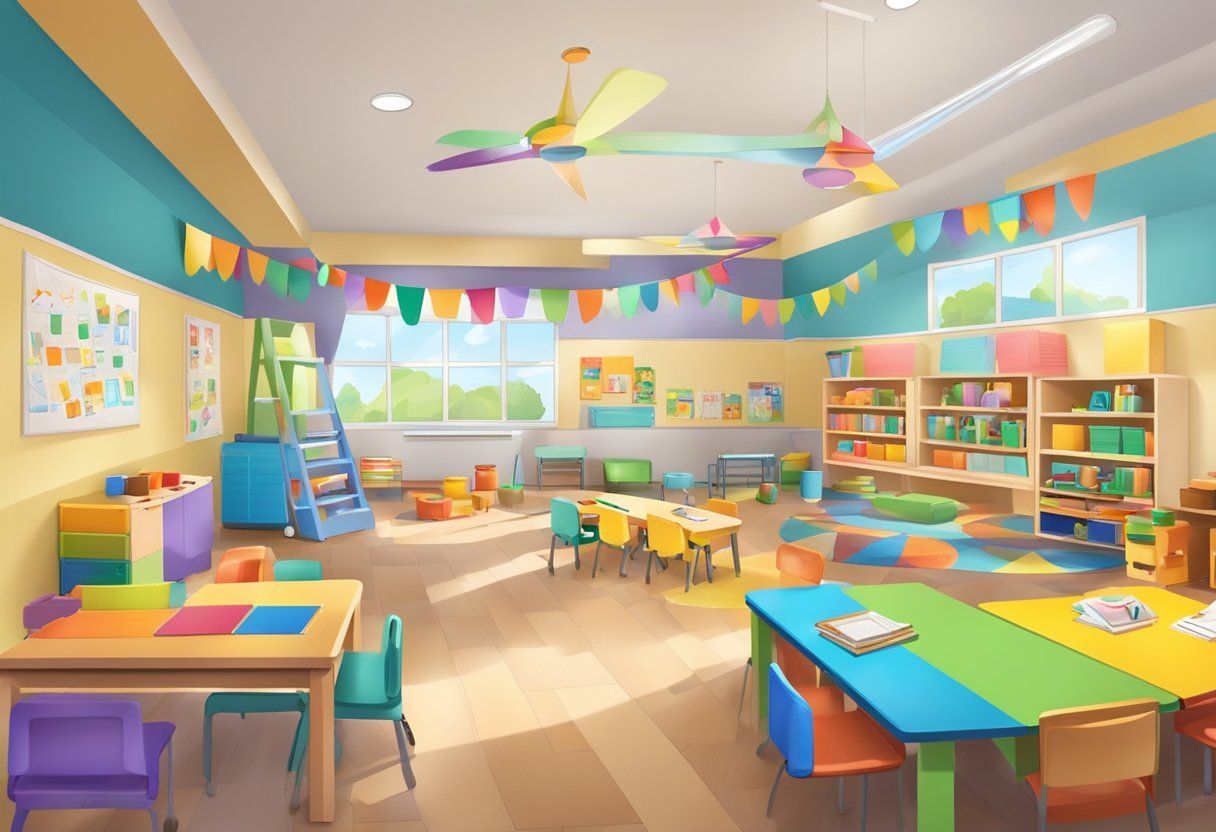BLOG
Categories
How In-Home Support Improves Behavioral Outcomes in Adopted Children: Essential Insights
Understanding Adoption and Its Impact on Child Welfare
Adoption plays a critical role in the child welfare system by providing permanent homes for children who cannot return to their biological families.
Understanding the nuances of adoption and the challenges within foster care is essential to improve child outcomes.
The Adoption Process and Child Welfare System
When you consider the adoption process, it is essential to recognize the involvement of various child welfare agencies, including organizations like the Michigan Department of Health and Human Services (MDHHS).
These agencies oversee the safe placement of children into adoptive families.
Michigan Adoption Day, for instance, highlights the importance of creating stable environments for children. Adoption provides permanency, which fosters better emotional and behavioral outcomes.
Adoption Incentive Awards can motivate states to increase the number of children who find permanent homes. These awards are designed to encourage successful adoptions.
By supporting the adoptive process, child welfare systems can focus on long-term family stability. This goal helps ensure that more children experience the benefits of a secure and supportive home.
Challenges Within Foster Care
Foster care presents its own set of challenges that can affect a child's well-being.
The foster care system is intended as a temporary solution for children needing safety from their birth families. Unfortunately, children often move multiple times, impacting their emotional stability.
High turnover rates of foster placements can result in emotional and behavioral issues, making the transition to adoption more complex.
The system aims to provide a nurturing environment, but limited resources and support often create obstacles.
It's crucial to address these issues to ensure that children can find permanent adoptive homes more easily.
The Role of In-Home Support for Adopted Children
In-home support plays a vital role in improving the behavioral outcomes of adopted children.
Benefits of In-Home Services
In-home services offer a range of advantages for adopted children.
Personalized care is often more effective than generic approaches.
Professionals can tailor activities and therapeutic strategies to meet each child's unique needs.
A familiar home setting can make children feel more comfortable and open. This can facilitate communication and trust, which are crucial for their emotional growth.
Early intervention can also address behavioral issues before they become more serious, leading to better long-term outcomes.
Types of Community-Based Mental Health Services
Community-based mental health services provide critical support. They include counseling, therapy, and skill-building exercises.
Therapists can visit children at home, offering flexible and adaptive care. This can be more effective than traditional, clinic-based services.
Services funded by federal Medicaid can reduce financial barriers, allowing more families to access needed care.
Licensed professionals ensure compliance with guidelines, fostering safe and ethical treatment environments.
These services aim to integrate smoothly with everyday family life, making them accessible and beneficial for the child and family alike.
Measuring Outcomes of In-Home Support
In-home support aims to enhance the behavioral, emotional, and social development of adopted children.
Evaluating Behavioral Improvements
When assessing the effectiveness of in-home support, you observe changes in children's behavior over time.
This typically involves measuring the reduction in behavioral problems and tracking improvements in positive interactions within the family setting.
You might use tools that gauge shifts in emotional stability, social development, and coping skills.
These evaluations often involve input from both caregivers and professionals.
Collecting feedback from caregivers is essential, as they can provide firsthand accounts of how the support has influenced the child's behavior.
Professionals can also track progress through periodic assessments.
Consistent improvements might point towards long-term benefits such as better emotional regulation and stronger social bonds.
Implications of Randomized Controlled Trials
Randomized controlled trials (RCTs) are a valuable method for studying the outcomes of in-home support.
You often rely on RCTs to provide unbiased, reliable data on the effectiveness of various interventions.
These trials help identify which methods lead to improvements in child development and particularly focus on mitigating serious emotional disturbances.
In these studies, comparisons between groups receiving different types of support highlight the effectiveness of specific strategies.
You might learn which interventions are most beneficial for enhancing social skills and reducing emotional disruptions.
This knowledge can guide future practices and ensure that the support provided to adopted children is both effective and evidence-based.
Enhancing Social Skills and Relationships

In-home support plays a crucial role in developing social skills and fostering relationships in adopted children.
The Importance of Sibling Connections
Building strong sibling relationships can offer adopted children a sense of belonging and security.
Sibling bonds provide a unique support system that can help in adjusting to a new family.
By engaging in activities together, siblings can enhance their social skills through shared experiences.
In-home support can include facilitating communication and organizing family activities that encourage cooperation among siblings.
Parents are advised to actively promote these interactions, reducing potential conflicts and building a harmonious home atmosphere.
You're encouraged to recognize individual needs. Understanding differences in age or interests helps in tailoring activities that everyone enjoys, minimizing sibling rivalry.
Effective communication between siblings also plays a significant role in reducing parenting stress and improving family dynamics.
Fostering Positive Interactions at School
Schools present an opportunity for adopted children to practice and improve their social skills.
Participating in group activities or projects helps them develop essential communication skills.
In-home support ensures children feel confident enough to engage in such settings.
Working closely with teachers can provide insights into a child’s school interactions.
Addressing issues like child maltreatment, parents can ensure a safe learning environment.
Parent collaboration with educational staff can help identify resources that support a child's social development.
You're advised to engage in regular discussions with children about their school day.
Providing guidance on conflict resolution and making friends fosters better social adaptation.
Ensuring a nurturing home environment complements these efforts, promoting positive behavioral outcomes.
Striving for Permanency and Stability

In-home support plays a critical role in achieving permanency and stability for adopted children.
Strategies to Reduce Permanency Backlog
You can help tackle the permanency backlog by focusing on quick and efficient pathways for adoption.
Collaborating with agencies to streamline the adoption process is vital.
Reducing paperwork and potential administrative delays ensures faster placements for waiting children.
Adoption incentive programs, like the federal adoption incentive award, encourage more families to adopt by providing financial rewards.
Initiatives aimed at reducing long-term institutionalization of children can help lower the number of kids stuck in the system.
Partnering with local communities and governments ensures that more children find stable, loving homes without unnecessary delays.
Investing in the Future of Vulnerable Children
Investing in the future of vulnerable children requires multi-faceted approaches.
Offering continuous in-home support services aids families in managing the unique challenges faced by adopted children, mitigating behavioral issues before they escalate.
Creating tailored educational and psychological resources promotes better coping mechanisms for both children and guardians.
Support groups for families can provide much-needed emotional backing, reducing feelings of isolation.
Infrastructure improvements in foster care systems can further solidify placement stability.
By investing in these areas, you nurture a supportive environment aimed at enabling children to thrive and experience a predictable, fulfilling future.
Frequently Asked Questions

In-home support plays a vital role in helping adopted children adjust and thrive. It can strengthen attachment bonds, improve behavior, and create a warm environment for the child. Here you will find answers to common questions about fostering positive outcomes for adopted children.
What strategies support developing strong attachment bonds with an adopted child?
Consistency and patience are key in forming strong attachment bonds.
You should spend quality time together, engage in activities your child enjoys, and establish a predictable routine.
Be attentive to your child's emotional needs and always offer reassurance.
Which behavioral interventions are recommended for adoptive families to address challenging behaviors?
Behavioral interventions may include counseling, social skills training, and customized behavioral plans.
You may want to collaborate with therapists who have experience in adoption issues to develop effective strategies tailored to your child’s needs.
How can parents create a welcoming environment to help an adopted child acclimate?
To help your child acclimate, create a safe and nurturing space.
Personalize their room with items they like, involve your child in family traditions, and encourage open communication.
Ensure they feel heard and included in family decisions to build trust and security.
What are common behavioral challenges faced by adopted children and how can they be overcome?
Adopted children might experience anxiety, difficulty trusting, or acting out behaviors.
You can work with professionals to identify triggers and make use of strategies such as positive reinforcement, consistent discipline, and other therapeutic techniques to manage these challenges.
How can in-home support influence positive behavioral outcomes in adopted children?
In-home support services offer personalized care and insight into your child's behavior in their everyday environment.
These services might include parent training, family therapy, and home visits from specialists, aiming to promote stability and improve the family dynamic.
What best practices do experts recommend for adoptive parents to manage behavioral issues?
Experts recommend maintaining open lines of communication and staying educated about adoption-related issues.
You should also seek support from adoption-focused groups and professionals, focus on positive parenting techniques, and consistently reassure your child of your commitment and love.
RECENT POSTS
Bringing and keeping families together!










